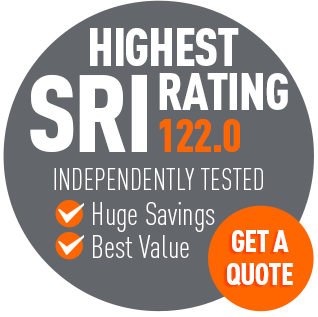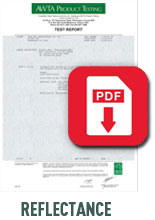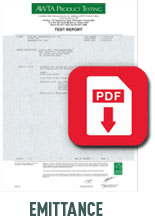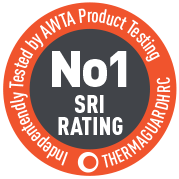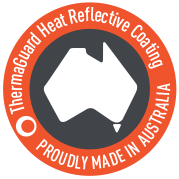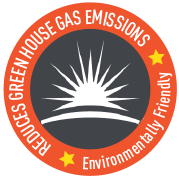Cool Roof Coatings are Very Cool – Here’s Proof
Expert performance testing by the University of Melbourne.
ThermaGuard HRC is independently tested for performance by the University’s Faculty of Architecture, Building and Planning using specific small buildings and calibrated instruments to model real life conditions.
Here are 4 observations.
- The control building (black line) shows under roof temperatures reached 70 degrees – double ambient air temperature.
- Whereas the ThermaGuard HRC coated building remained close to ambient air temperature – even during 30+ temperatures.
- The ThermaGuard HRC coated building stayed slightly warmer over summer evenings (than the control building).
- These results indicate that within the ThermaGuard HRC coated building, there was improved comfort (compared to the control building).
About Solar Reflective Index and Cool Roof Coatings
How do you decide which product is best? That’s where SRI comes in.
Solar reflective Index (SRI) is the measure of effectiveness for heat reflective paint. SRI is a combined measure of both solar reflectance and emittance to represent a material’s temperature in the sun.
Roof paint measured by the SRI index would normally be a figure between 0-100. However the scale goes beyond, so a very hot material can actually have a negative figure and very cool materials can have values greater than 100. Thermaguard HRC has a score of 122.
Because ThermaGuard HRC reflects and re-radiates light energy back to the sky, the heat never enters your building. And that is why we do not use ‘R values’ as applied to bulk insulation, because the commonly known R Value is actually a measure of resistance to heat passing through (i.e. transfer) – see our FAQ for more.
3 special benefits of ThermaGuard (H)eat (R)eflective (C)oating
-
- ThermaGuard HRC helps to keep internal temperatures near ambient because light energy is reflected back to space at the building’s exterior. That is especially advantageous in open or partially open buildings.
- Exterior reflective coatings are very attractive as a low cost way of passively maintaining steady temperatures within very large industrial or retail areas. By passively we mean ‘without enormous energy costs’!
- ThermaGuard HRC heat reflecting paint helps extend the life of your roof by providing a sealing membrane (meaning a barrier between your rooftop and the harsh weather). Because the sun lit roofing surface is now largely immune to thermal shock (i.e. the coated surface does not stretch or shrink), it is a fantastic sealing barrier for asbestos and control of previously corroded roof surfaces.
Why ThermaguardHRC has the No.1 SRI rating in Australia
(5 important keys)
-
- Combines both ceramics molecules and titanium dioxide
- Includes the best internationally sourced resins and binders
- Includes inhibitors to maintain surface performance and colour
- Applied as a thick coating, creating a hard wearing sealing membrane
- Extensively field tested and subjected to industry review
Verified SRI and Published Results
Yes, ThermaGuard HRC is independently tested
Our senior industrial chemist, Steve Milroy commissioned AWTA to run these tests:
- ASTM E-408-71 (Re-approved 2002) for Total Normal Emittance of Surfaces Method A
- ASTM E903-96 Standard Test Method for Absorption, Reflectance, and Transmittance of materials using integrated spheres.
- ASTM –E1980-11Standard Practice for calculating Solar Reflective Index of horizontal and low sloped opaque surfaces.
Test A = Thermaguard HRC base white colour applied on galvanized metal
| Solar Reflectance | Emittance | Solar Reflective Index |
| 95.06% | 92.0% | 122.0 |
Test B = Standard metal galvanized roof sheeting material unprotected
| Solar Reflectance | Emittance | Solar Reflective Index |
| 38.76% | 38% | 17.5 |
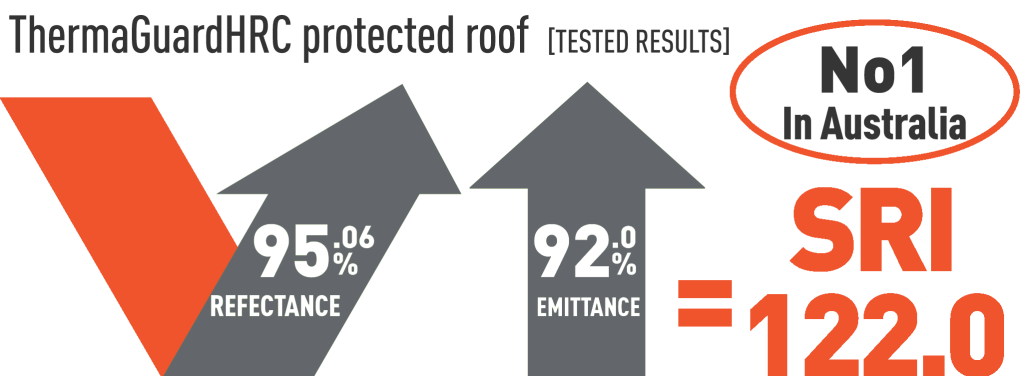
| |
BROCHUREGet the full specifications, MSDS and a project planner. |
| |
RECEIVE A MAILED PACKRead what researchers say & run your own real tests on coated and uncoated samples. |


